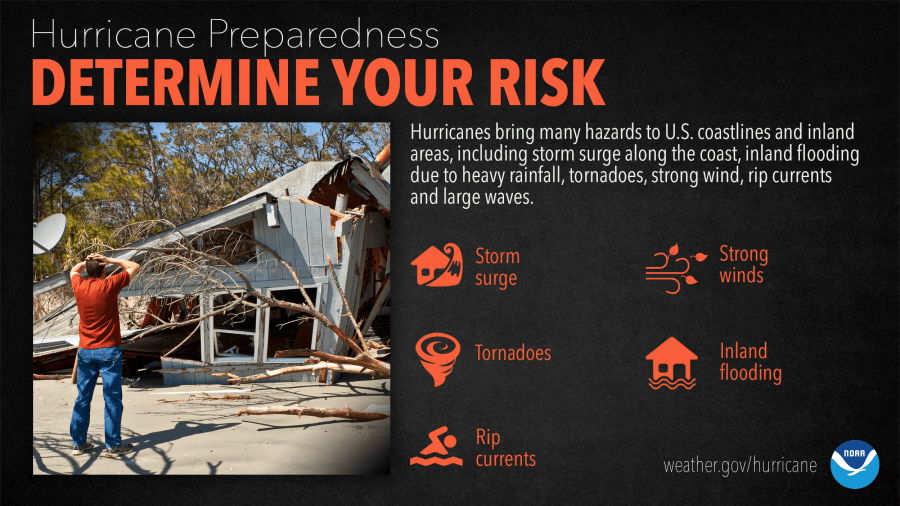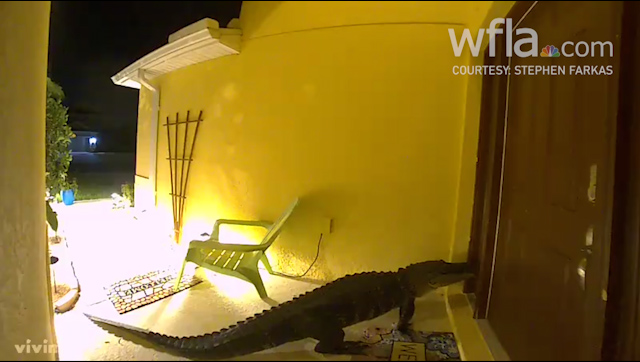TAMPA (WFLA) – Hurricane Preparedness Week which runs from May 9-15 is your time to prepare for the potential of a tropical storm or hurricane.
Sunday’s theme is determining your risk. Hurricanes bring many hazards to Tampa Bay and inland areas — from storm surge along the coast to inland flooding due to heavy rainfall. Tornadoes, high winds, rip currents, and large waves can all be an issue depending on where you live.
For detailed, local information about how to best prepare for hurricane season, click here for the Max Defender 8 Hurricane Guide
Find out what types of wind and water hazards could happen where you live, and then start preparing now for how to handle them.
Hurricanes are not just a coastal problem. Their impacts can be felt hundreds of miles inland, and significant impacts can occur without it being a major hurricane.
While hurricanes pose the greatest threat to life and property, tropical storms and depression also can be devastating. The primary hazards from tropical cyclones (which include tropical depressions, tropical storms, and hurricanes) are storm surge flooding, inland flooding from heavy rains, destructive winds, tornadoes, and high surf and rip currents.

Hurricane hazards
- Storm surge is the abnormal rise of water generated by a storm’s winds. This hazard is historically the leading cause of hurricane-related deaths in the United States. Storm surge and large battering waves can result in large loss of life and cause massive destruction along the coast.
- Storm surge can travel several miles inland, especially along bays, rivers, and estuaries.
- Flooding from heavy rains is the second leading cause of fatalities from landfalling tropical cyclones. Widespread torrential rains associated with these storms often cause flooding hundreds of miles inland. This flooding can persist for several days after a storm has dissipated.
- Winds from a hurricane can destroy buildings and manufactured homes. Signs, roofing material, and other items left outside can become flying missiles during hurricanes.
- Tornadoes can accompany landfalling tropical cyclones. These tornadoes typically occur in rain bands well away from the center of the storm.
- Dangerous waves produced by a tropical cyclone’s strong winds can pose a significant hazard to coastal residents and mariners. These waves can cause deadly rip currents, significant beach erosion, and damage to structures along the coastline, even when the storm is more than 1,000 miles offshore.
Storm surge & storm tide
- Storm surge and large waves produced by hurricanes pose the greatest threat to life and property along the coast.
- Storm surge is an abnormal rise of water generated by a storm’s winds. Storm surge can reach heights well over 20 feet and can span hundreds of miles of coastline.
- Storm tide is the water level rise during a storm due to the combination of storm surge and the astronomical tide – this was one of the contributing factors to the flooding seen in downtown Jacksonville with Hurricane Irma.
- The destructive power of storm surge and large battering waves can result in loss of life, buildings destroyed, beach and dune erosion, and road and bridge damage along the coast. Storm surge can travel several miles inland. In estuaries and bayous, saltwater intrusion endangers public health and the environment.
Tomorrow
As Hurricane preparedness week continues, tomorrow we will break down how to make an evacuation plan.

